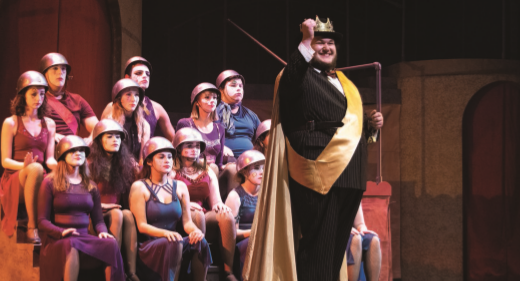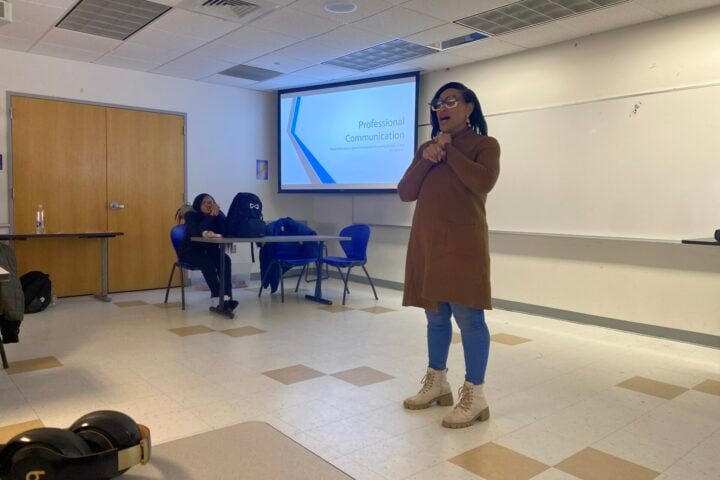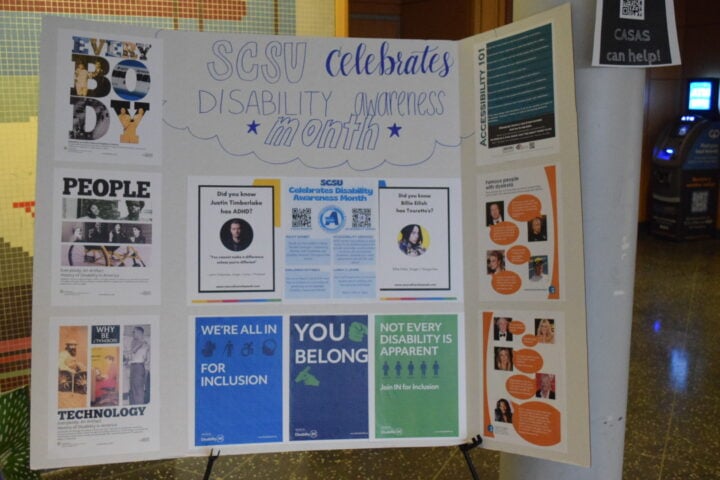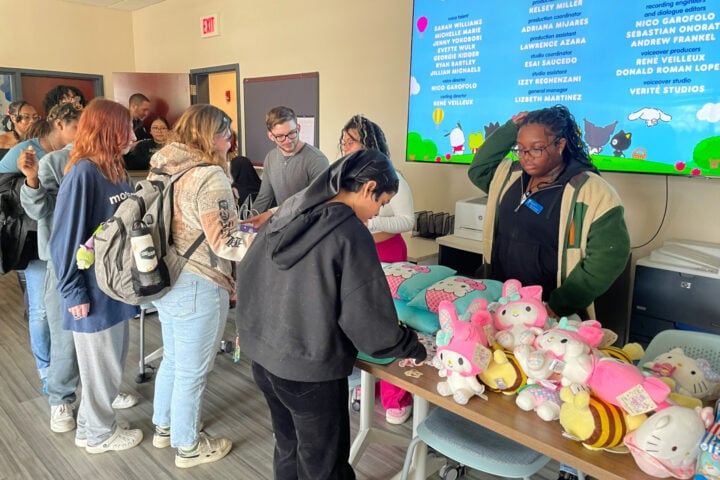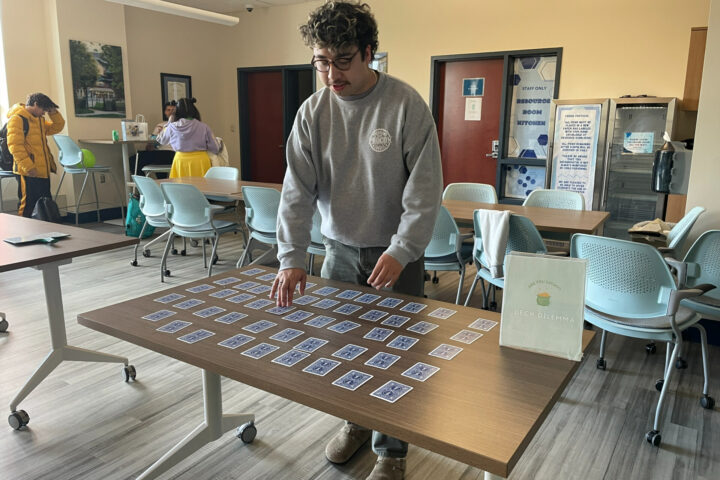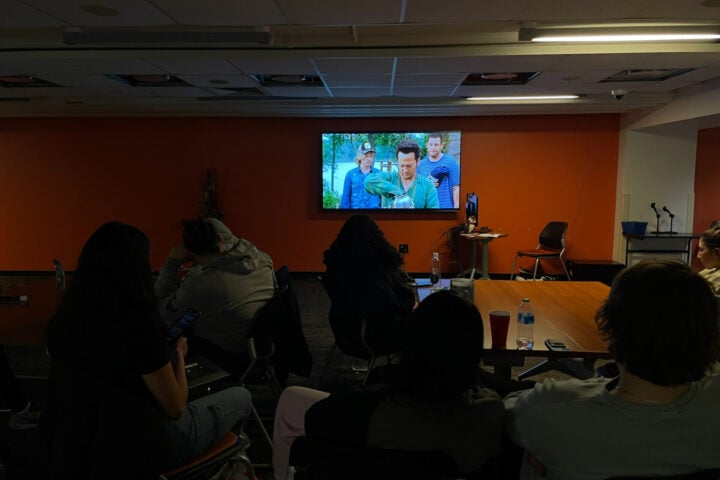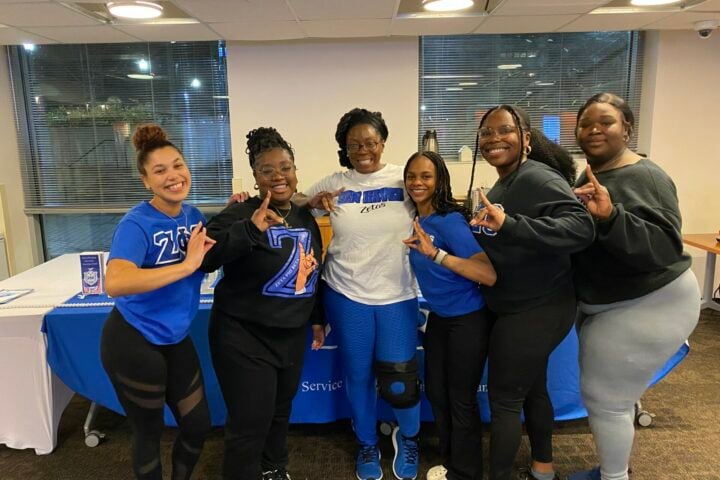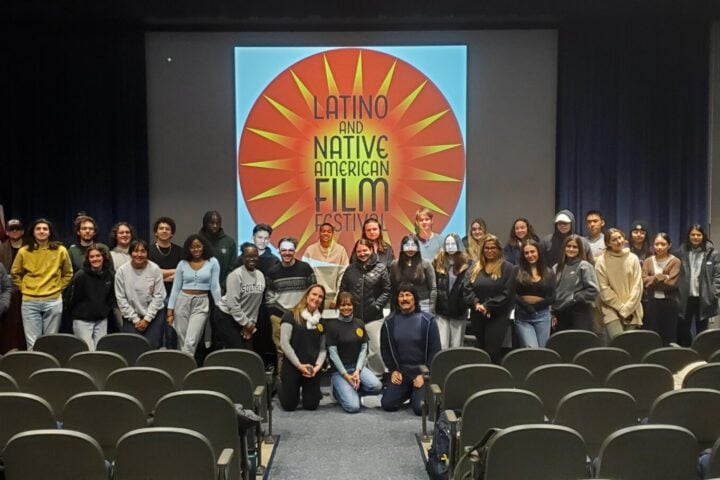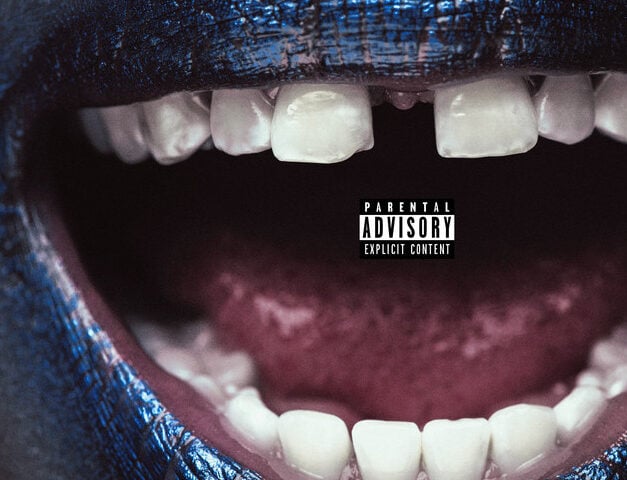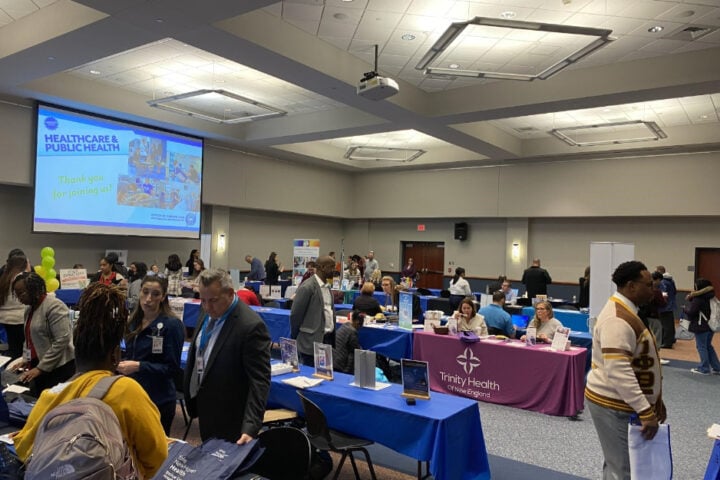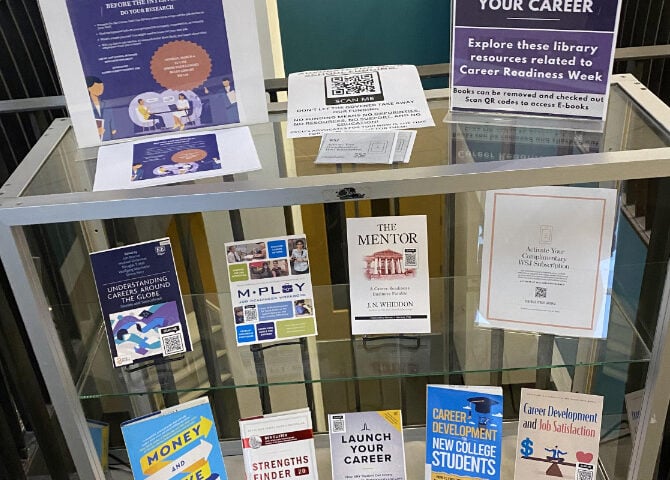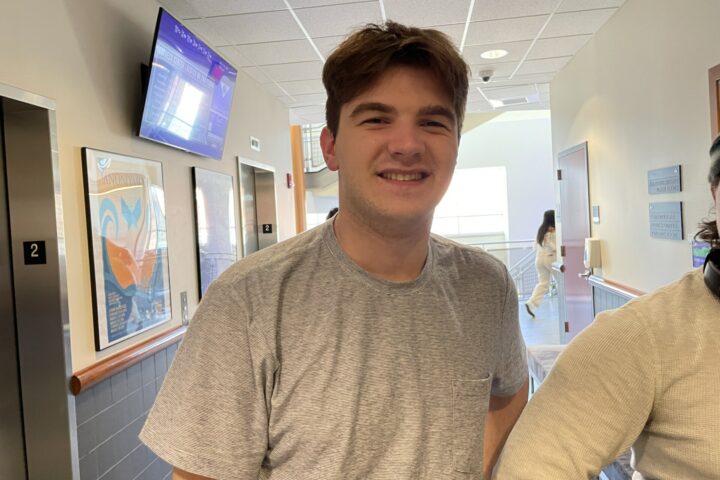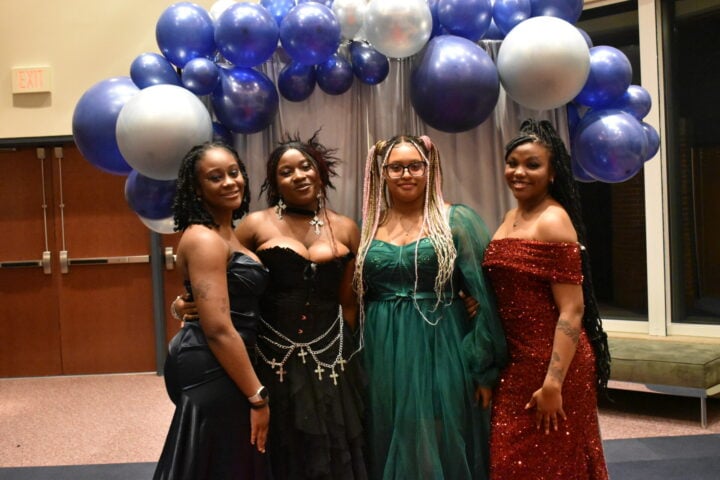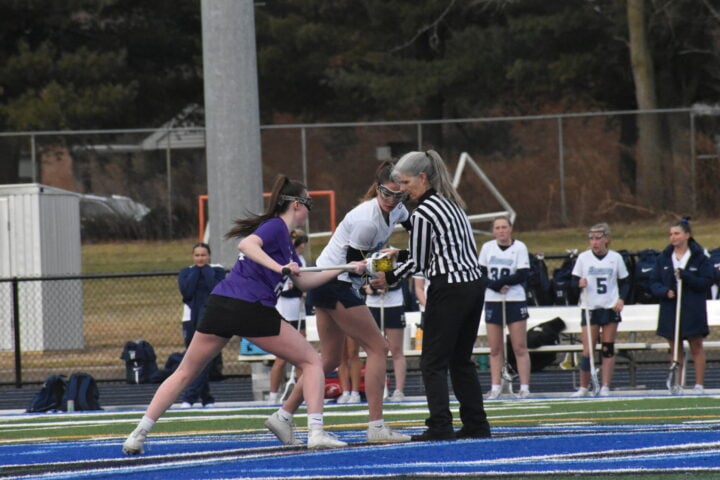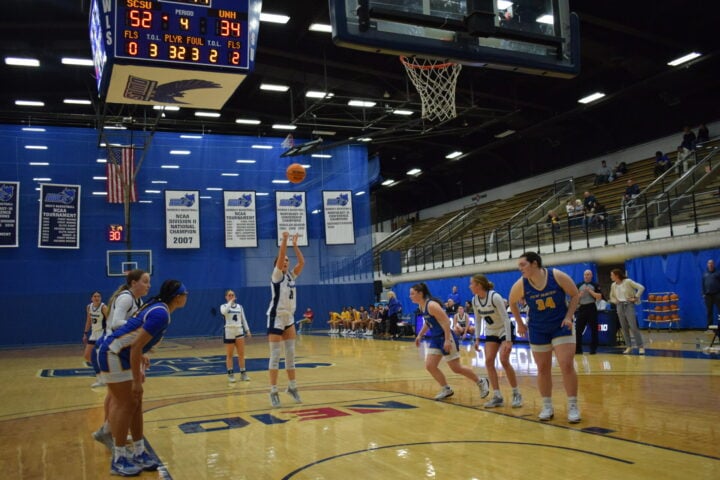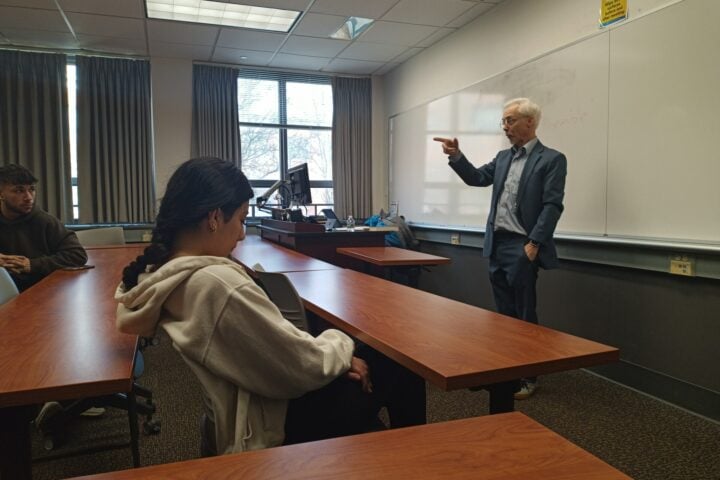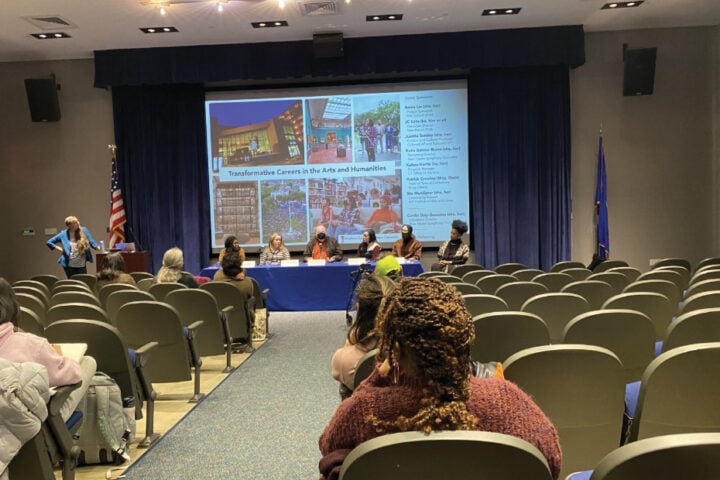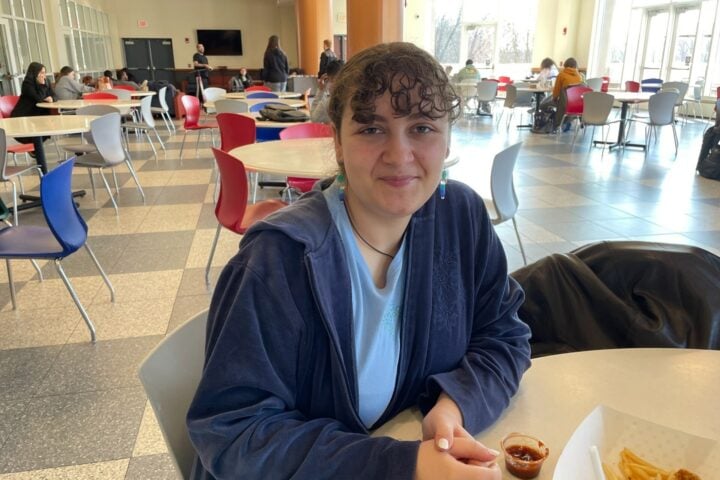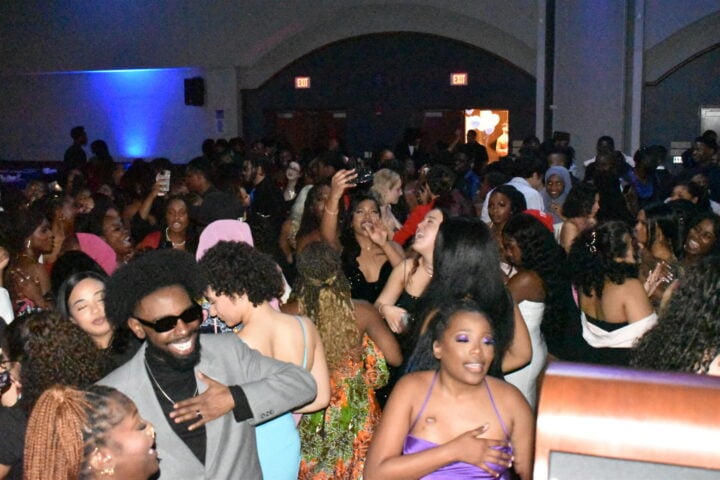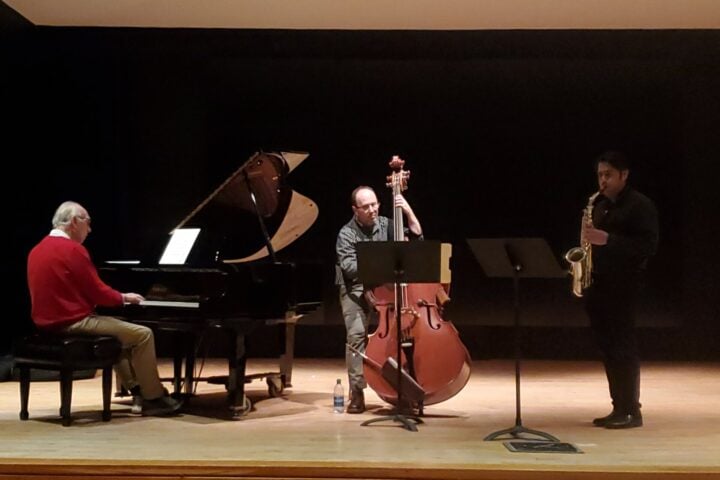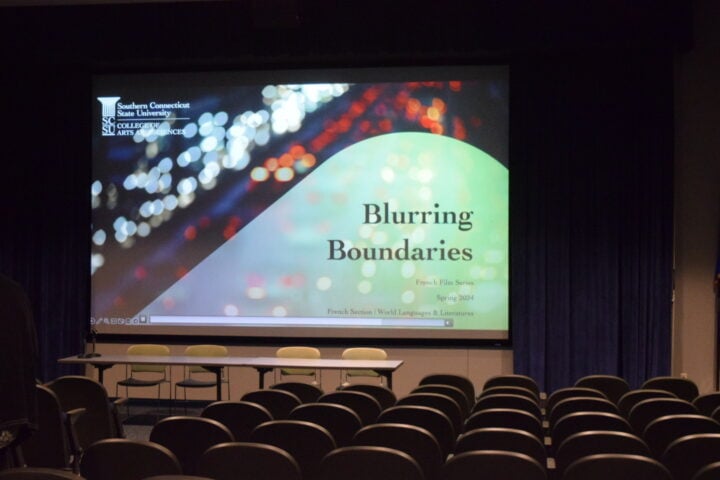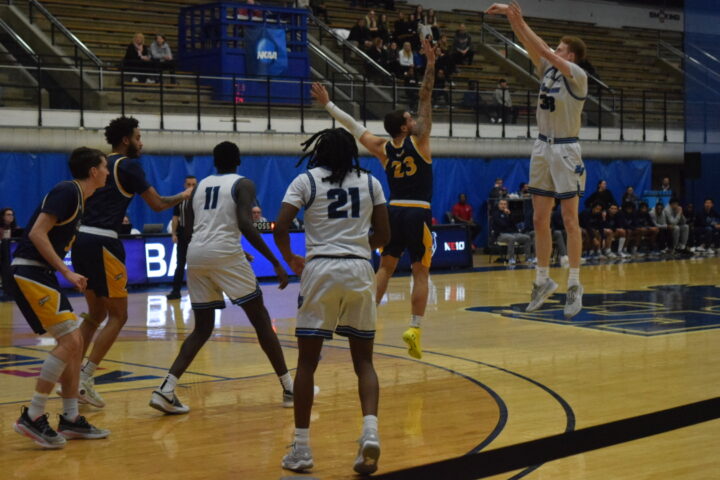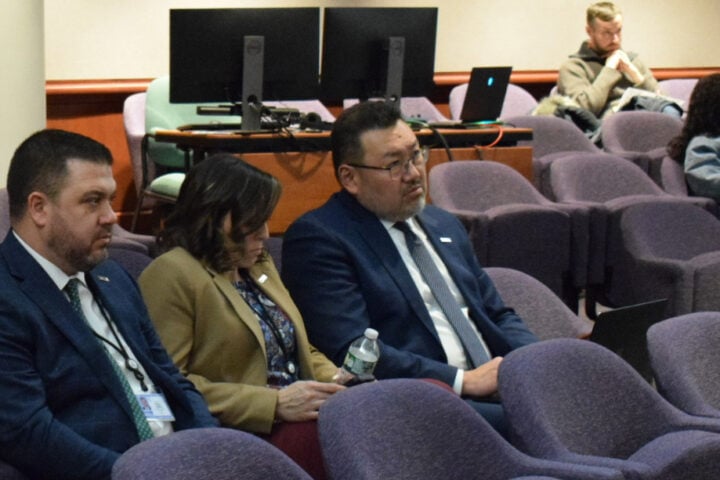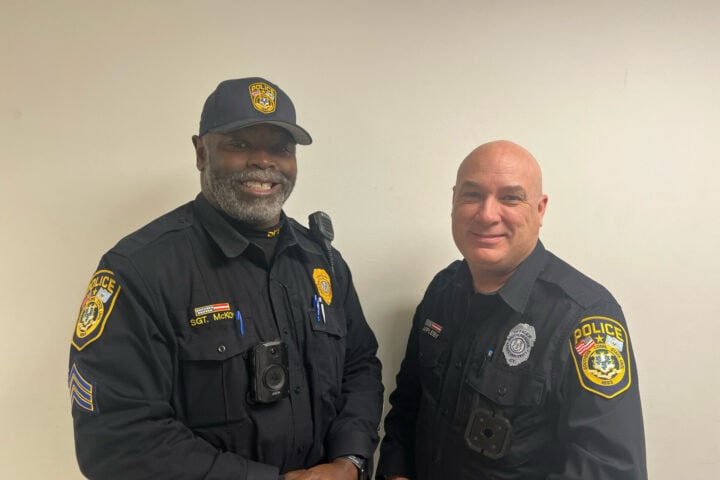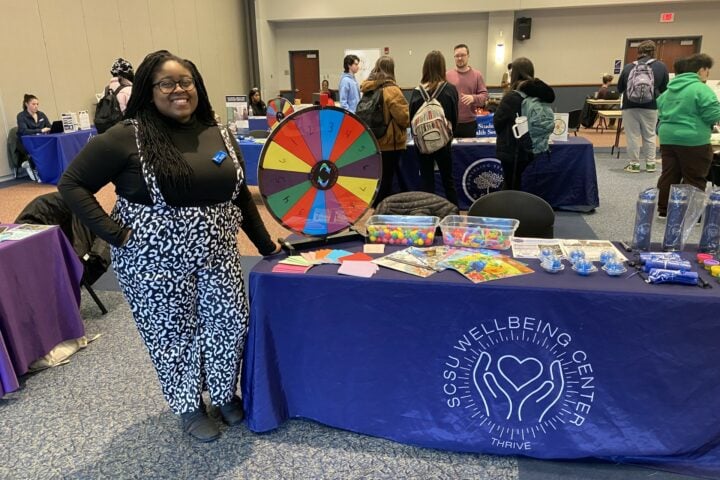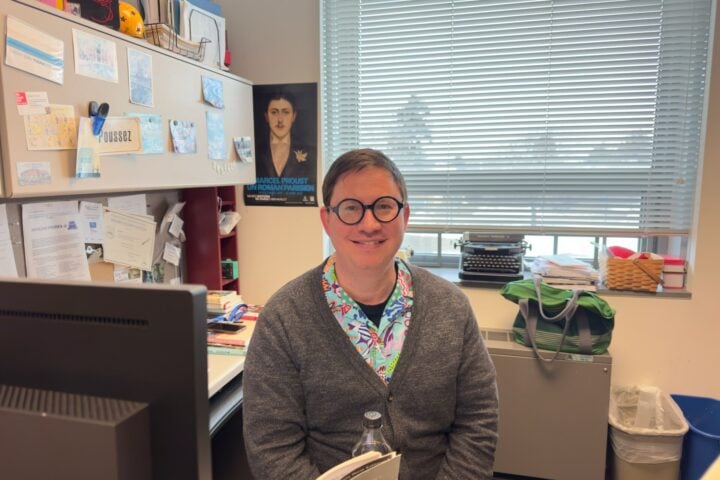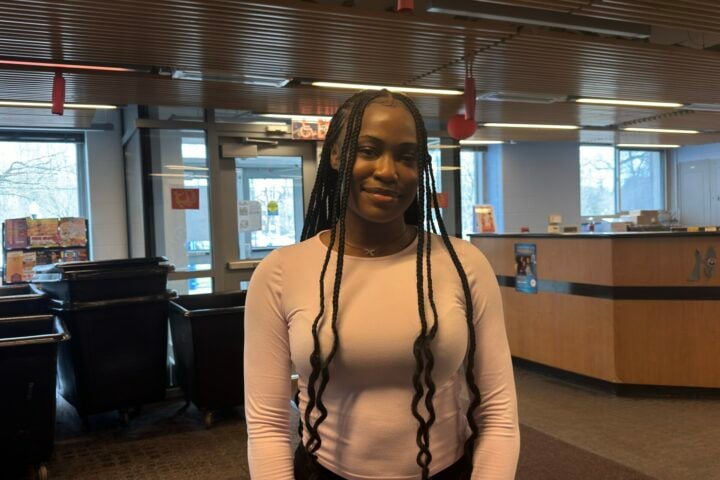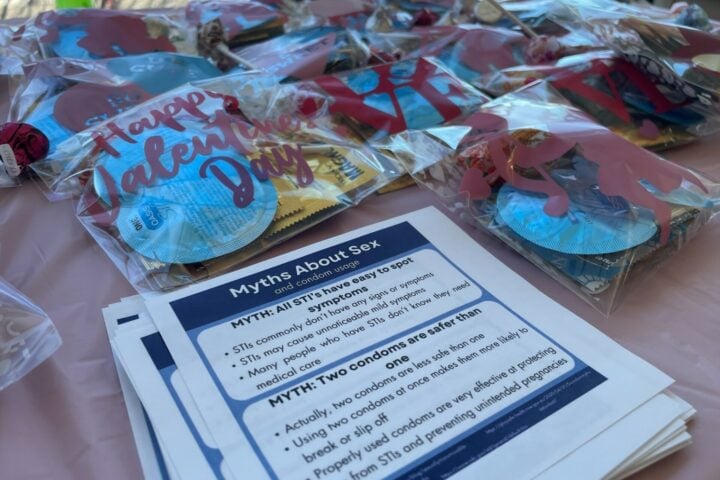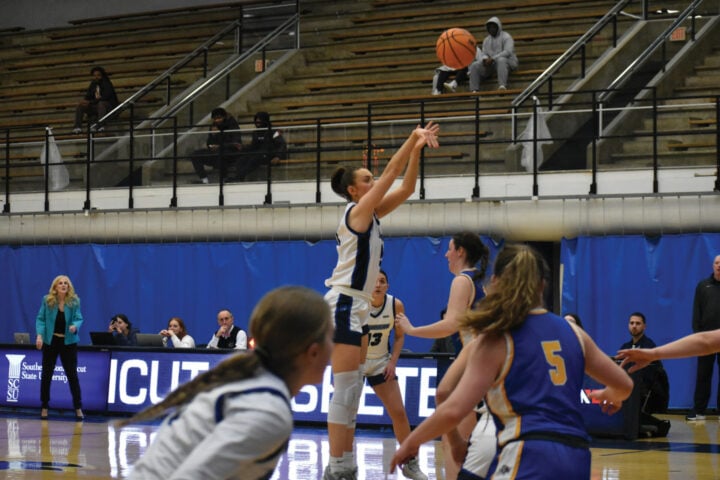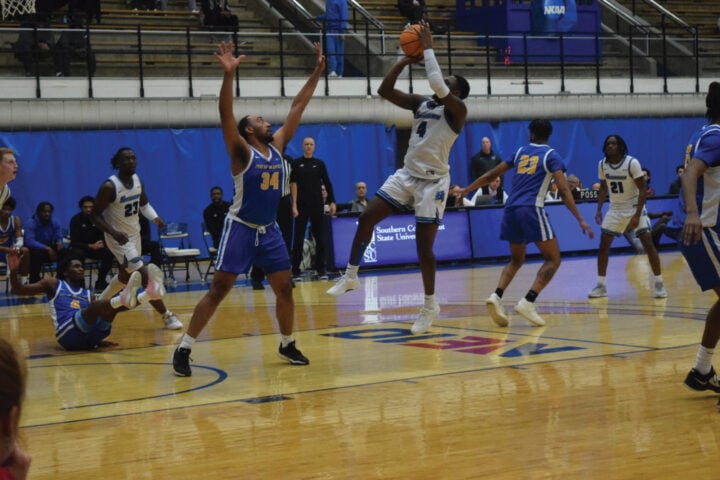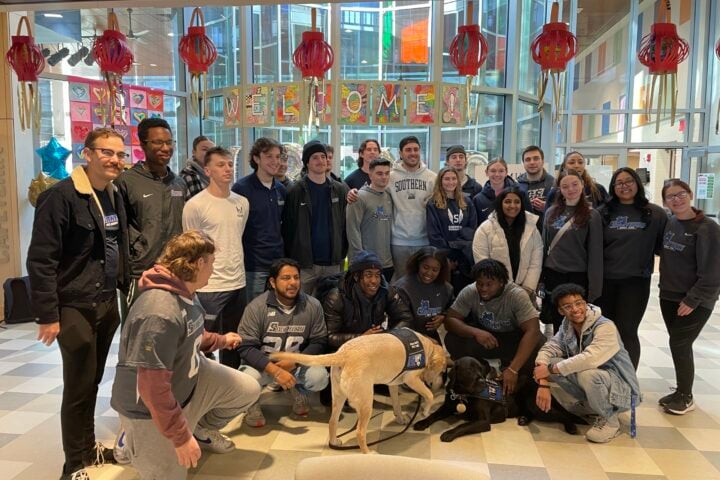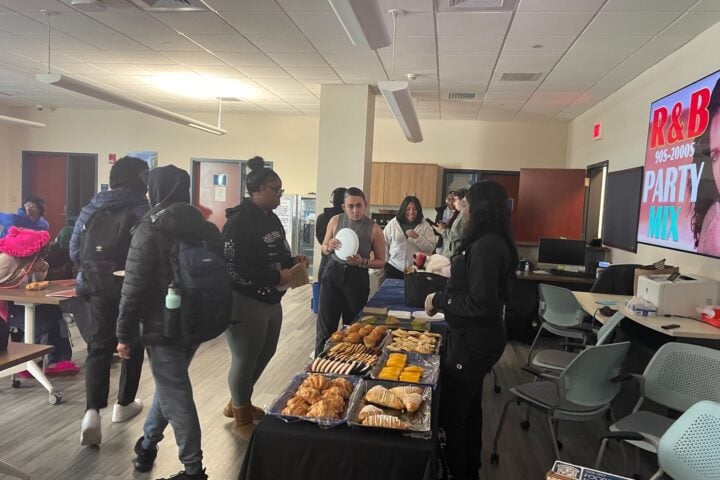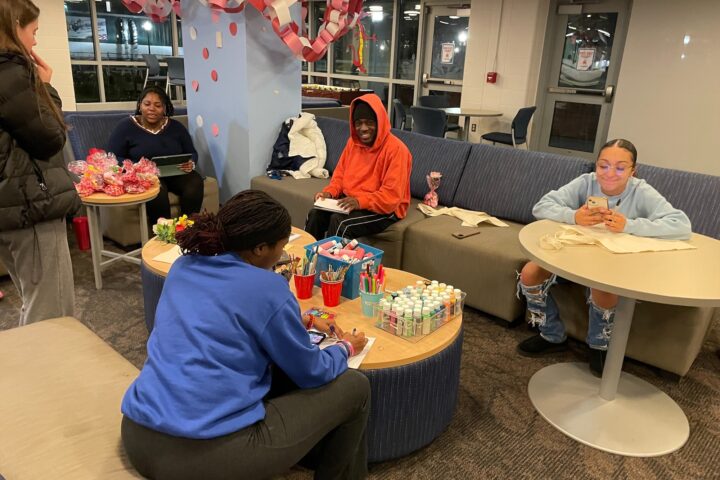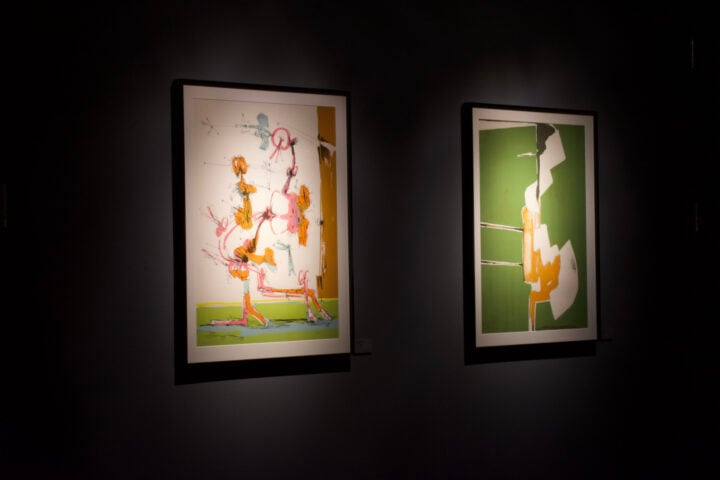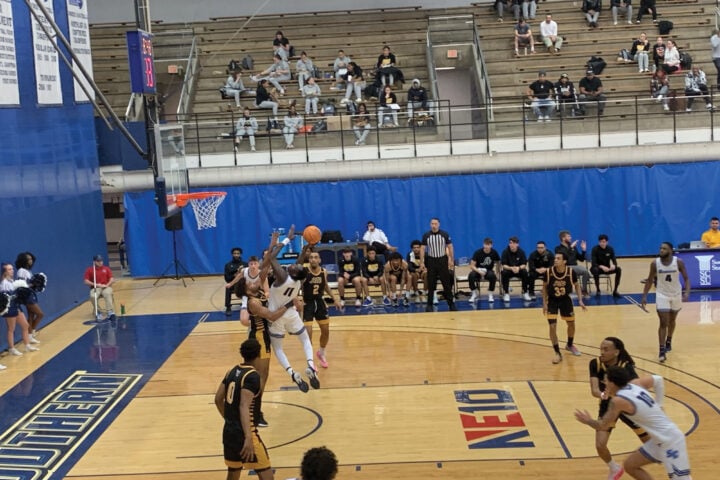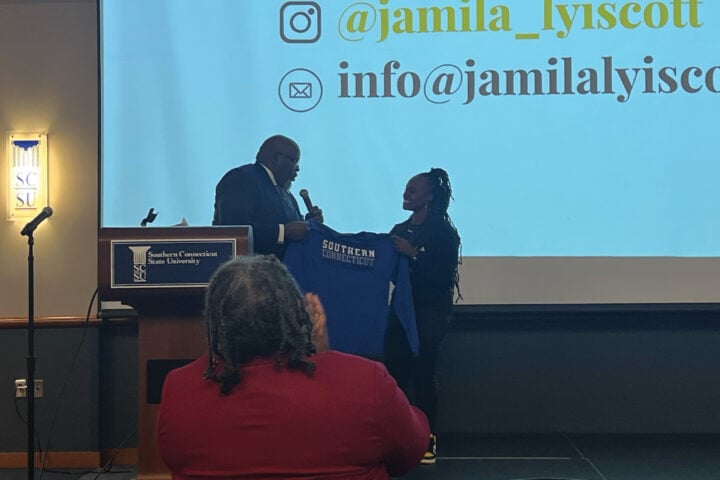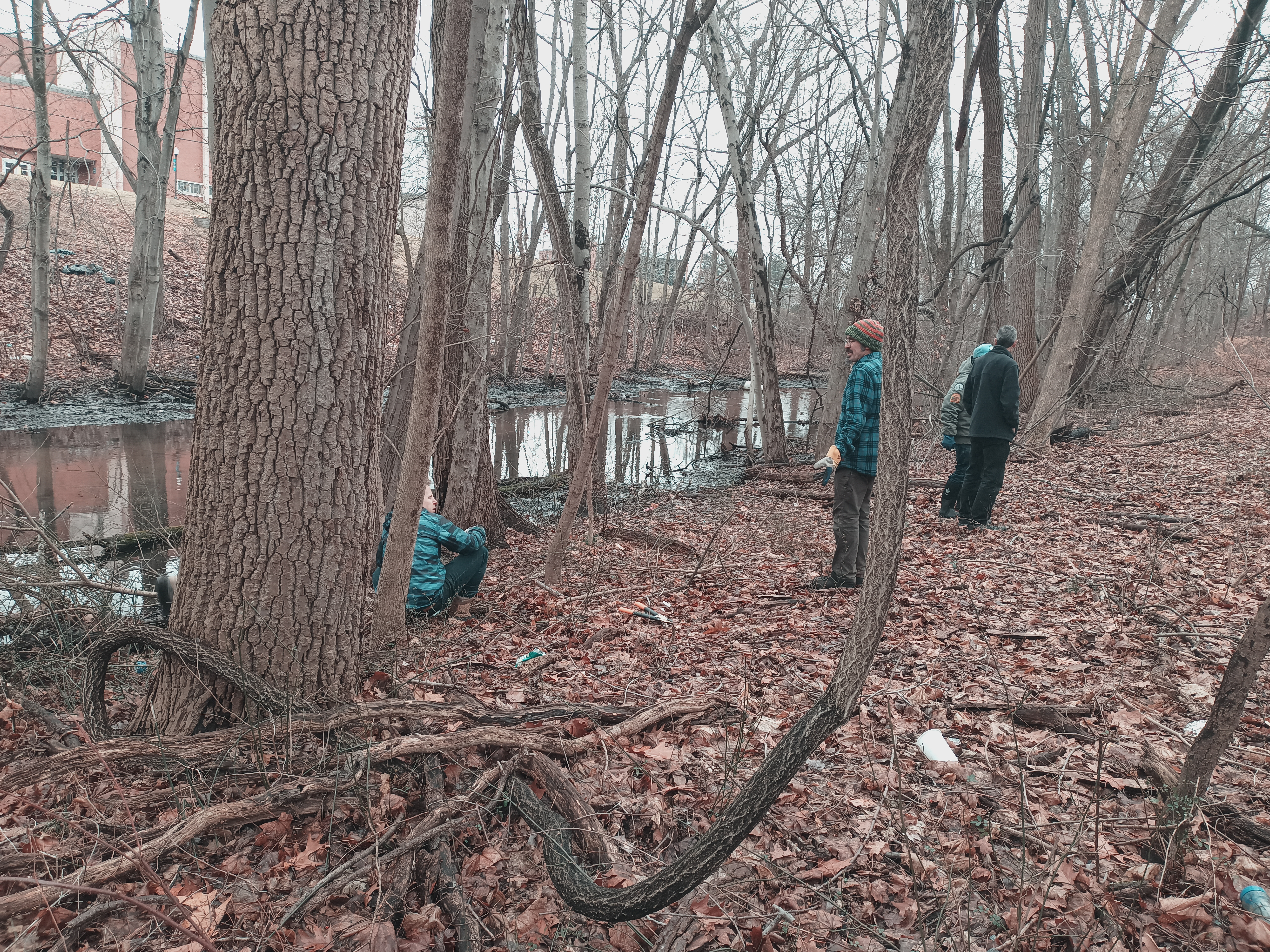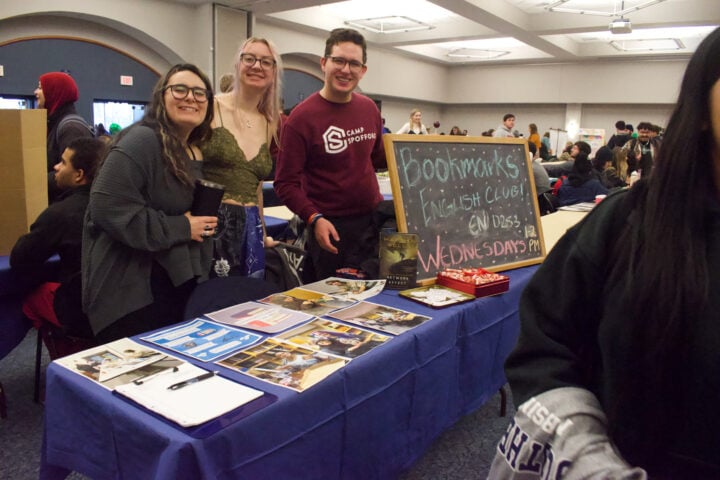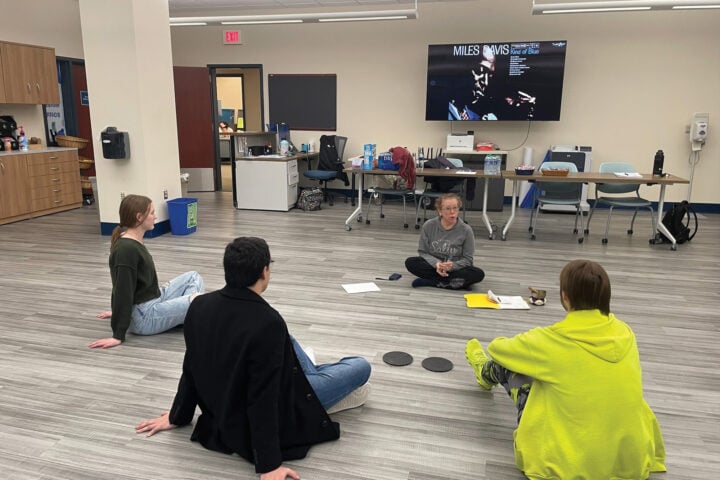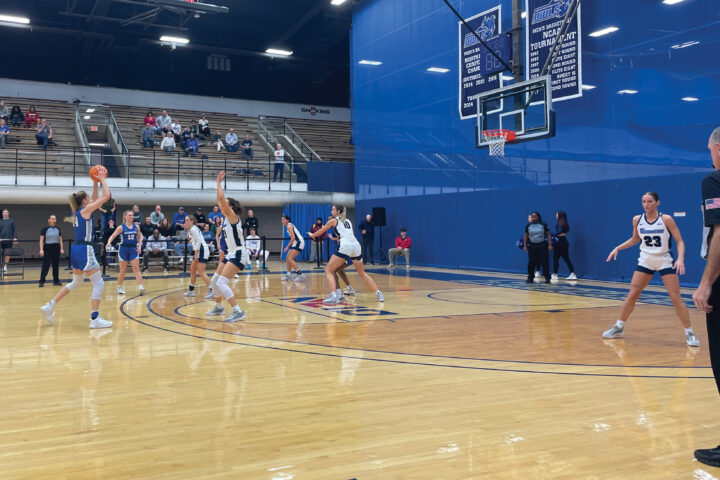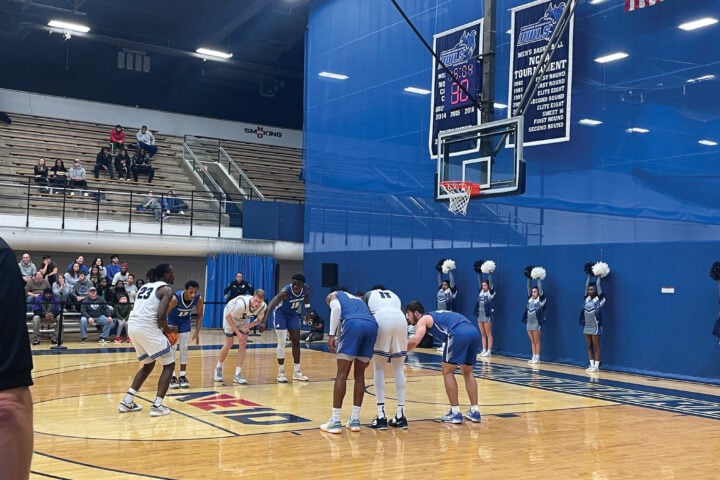Xavier Lassiter – Arts and Entertainment Editor
He looked out into the crowded Lyman Center Theater—his smiley, cheerful demeanor changed.
“I’m not going to say it tonight,” he said. “I’ve gotten to the point where even just reading it feels really toxic.”
Tim Parrish, author and English professor at SCSU, refused to read the word nigger from his book at a reading and discussion on Nov. 11. During his presentation, Parrish read excerpts from his recent book ‘Fear and What Follows’, which details his struggle with racism while growing up in 1960s Louisiana.
Parrish said he laments his racist past, but thought people could learn from his mistakes and gain a more intimate perspective of that time period. Yet, he said he was hesitant to publish such a candid book.
“When it got accepted into publication I thought the reactions would be negative and angrier than they’ve been,” he said. “But since it’s been released, I’ve been emboldened by the amount of thank you letters and emails I’ve received.”
Parrish was born in Baton Rouge where he lived in an all-white working class neighborhood. In 1970, Parrish experienced integration for the first time, but as an adolescent he felt he had to protect his neighborhood from blacks.
“I was functioning under the assumption that we had to protect our neighborhood when it was naturally integrated,” he said. “We felt that there was some sort of war going on between us and black people—we would get in these terrible race fights, and there was one at school where six people were put in the hospital and there was a trail of blood all the way down the hallway.”
Amidst depictions of pain and violence, Parrish said the aftermath of those moments highlight his self-analysis and gradual change in his worldview. Kevin James, orientation ambassador at SCSU, said Parrish’s book was captivating and inspiring.
“From the first time I read the first couple of pages and chapters, it was so broad that I couldn’t put the book down,” James said. “What made him so rare was that he was actually brave enough to stand up and challenge his former beliefs.”
Larry Tomascak, event manager for the Lyman Center, said Parrish’s reading and discussion was a great opportunity to learn.
“[Parrish] is one of our best professors, and possibly one of our best writers,” he said.
While Parrish has mostly rid himself of prejudice, he said he still occasionally endures flashes of his old thinking.
“I still struggle with it on occasion,” he said. “If I’m tired after a long day, and I’m stuck in traffic and a black person cuts me off, the n-word will pop into my head—then I have to stop and analyze why that is, and work through how I can change that.”
Parrish said he experienced one of his most poignant and important moments after chasing and beating up two younger black kids in his neighborhood. He said that while the memory haunts him, it was one of the first real shifts in his thinking, and that it will stay with him forever: “I went to the refuge of my backyard. The sound of flesh giving, the dullness of bone cracking—I covered my face. What I had done was despicable. Who was I? What was I? I cried until I wondered if I would ever be able to pull my mind back in.”
